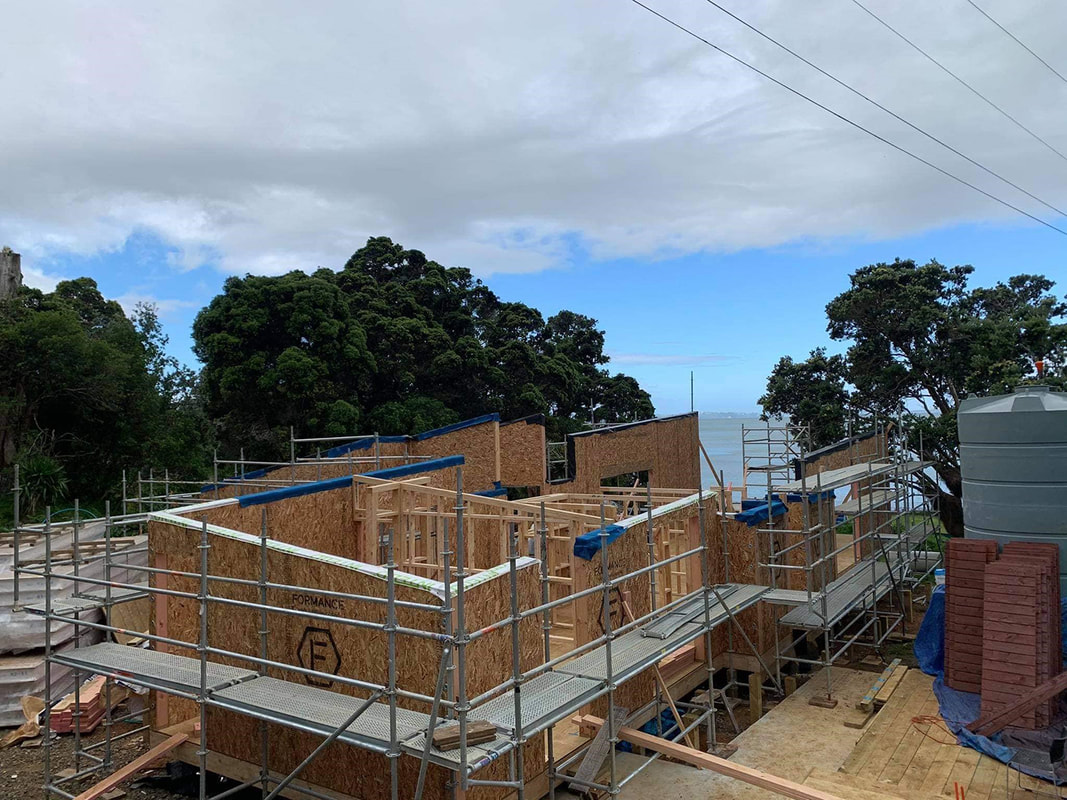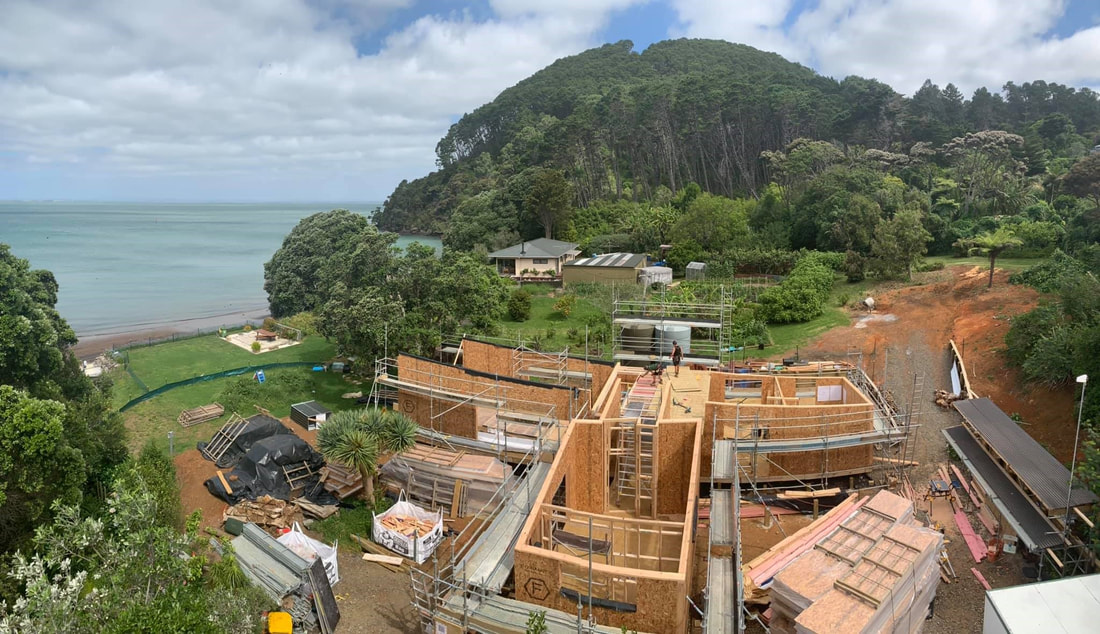|
Prefabricated builds offer a raft of benefits when it comes to both sustainable construction and time and cost savings. There is a common misconception, however, that prefab construction results in boxy, uniform houses, but this is not the case. As home builders in New Zealand, we have used prefab components in a number of projects and want to share their benefits to both you and the environment! Keep reading to find out what these are and learn more about the prefab building process. What is prefabrication in construction? Prefabrication, usually shortened to “prefab”, refers to the process of manufacturing parts of a building off-site, usually in a factory. These are then delivered to the building site, either complete or ready to assemble. Prefab homes may be gaining popularity now, but they have been used in New Zealand for many generations. Maori bundled raupō (bullrush) in advance for use in their whare (houses). Early European settlers shipped parts of prefabricated buildings from overseas. Prefab builds can come as a whole building ready to be transported into place, or as specific smaller components that are then assembled on site. The image below shows the range of options available when it comes to prefabrication. From wall panels to volumes and hybrid structures ready to be delivered to site, there are many ways to approach prefab builds. The Benefits of Prefabrication There are three main benefits of prefabrication: time and cost savings, better quality, and reduced waste. Time and cost savings Prefab homes can be completed much faster and in a more streamlined manner compared to traditional builds. Prefab NZ, New Zealand’s Prefab membership organisation, estimates that prefab building can lead to a 15% saving in construction costs and a 60% reduction in construction time. As well as reducing costs, prefab building also allows for more pricing certainty from the onset, rather than waiting to see how a traditional build pans out in terms of time and materials used. Better quality homes with less damage Having prefab panels and components built in a factory allows for more precision than building on-site. This means you can be sure pieces will arrive straight and will fit together correctly. Another benefit is that the framing will not have been subject to any bad weather and will not have any water damage that could lead to mould growing in the framing. The fast assembly time also means that the roof can be attached faster, protecting all the internal materials from the elements. Reduced waste Producing framing in a factory leads to less waste in terms of offcuts, as pieces can be cut to size much more precisely. Another environmental benefit is that any chemicals used during production can be cleaned up correctly inside the factory, rather than ending up in the earth on the building site. Recent Prefab Trends & Materials Technological advancements and innovations in both process and materials are constantly being made in the prefab space, and three of which are gaining momentum in New Zealand: mass customisation, cross-laminated timber (CLT), and structural insulated panels (SIPs). Mass customisation Modern prefab builds allow for unique designs using technology-driven components such as panels and pods, or a modular building system. This means you won’t get an “out of the catalogue” look. The ability to join different panels and components means that the homeowner can still have input into the design, while reaping the benefits of cost and timing certainty that prefabrication provides. Cross-laminated timber Cross-laminated timber (CLT) panels are a type of prefab panel made by gluing several layers of solid wood board together. These panels are precisely and economically cut in a factory according to specifications, and are strong enough for use in walls, floors, stairs, and as structural roofing panels. Since CLT panels have their own thermal mass, they can be used in passive house design, particularly when well insulated. Additionally, the natural timber is great for acoustics, helps regulate moisture levels in the building, and has no embodied carbon. CLT panels are installed like any other prefab panel—by transporting them to the site and screwing them into place. These can also be unscrewed and reused for future builds if necessary. Structural insulated panels Structural insulated panels (SIPs), also known as ‘stress-skin’ panels, feature a polystyrene core pressed between two panels. These panels are generally made of oriented strand board but can also be made from other materials, such as plywood and steel. Similar to CLT panels, SIPs can be used for a building’s structure instead of traditional framing, and are also custom-made and custom-cut in a factory according to specifications. SIPs offer plenty of benefits to any build: they let you achieve high R-values for insulation at a good price, are airtight, reduce waste and building time on-site, and protect insulation from deterioration and pests. Recent Prefab Projects at Craft Homes From time of writing, most of our recent high-performance home builds have incorporated elements of prefabrication, and we’re thrilled to be able to bring prefab technology to more Kiwi homes. SIP home in Cornwallis featuring SIP wall panels. Our recently completed Red Beach home project has been thermally modelled as a low energy home, and has prefab floor, wall, and roof panels from CARTERS. We’re also currently completing a SIP home in Cornwallis using SIP walls and roofing from Formance, who are New Zealand based (shown in the image above).
Finally, our new home that we will be building in Raglan in early 2021 will be using structurally insulated panels. Using prefab components in your next build To see how prefab construction could save you time and money when building a new home, talk to the expert team here at Craft Homes! We have experience using prefab components in our projects and would be happy to go over the benefits in detail during a free consultation.
1 Comment
|
AuthorToby and Cat Tilsley Archives
September 2021
Categories |




 RSS Feed
RSS Feed


